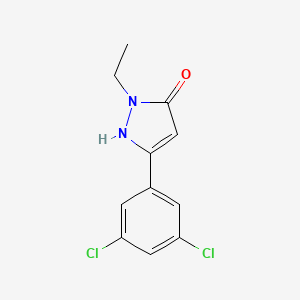|
Name: Acryl fentanyl (N-(1-phenethylpiperidin-4-yl)-N-phenylacrylamide)
Type: Synthetic opioid
AKA: Acryloylfentanyl

|
|
II. Natural Derivative
Synthetic substance, no natural derivative
 |
|
III. Chemical Profile (IUPAC name)

|
|
IV. History
Acryl fentanyl, a synthetic opioid, was first identified in the early 2010s as part of research into fentanyl analogs. It was developed to have similar effects to fentanyl but with slight chemical modifications. Acryl fentanyl's introduction to the illicit drug market was part of a broader trend towards the creation of new synthetic opioids. Its potent effects and high potential for overdose led to regulatory actions aimed at controlling its distribution and addressing public health concerns.

|
|
V. Legal Information
Acryl Fentanyl is a potent synthetic opioid analog with high abuse potential. It is controlled due to its effects similar to fentanyl, with increasing regulation to manage its misuse. [Source: UNODC].
US Federal Schedule - I
Schedule I drugs, substances, or chemicals are defined as drugs with no currently accepted medical use and a high potential for abuse. Some examples of Schedule I drugs are: heroin, lysergic acid diethylamide (LSD), marijuana (cannabis), 3,4-methylenedioxymethamphetamine (ecstasy), methaqualone, and peyote.
Key US Federal Policies:
Controlled Substances Act. Public Law: Public Law 91-513 (text can be found on GovInfo) (https://www.dea.gov/drug-information/csa). Date enacted: October 27, 1970.
|
|
VI. Physical Effects
Acryl fentanyl is a potent synthetic opioid with high analgesic effects. It acts as a downer, causing significant sedation and respiratory depression. Short-term use provides pain relief, but long-term use can result in addiction and tolerance. Overdose risks include severe respiratory depression and potential death. Safe use involves careful dosing and medical supervision. Recent studies investigate its potency and potential risks compared to other opioids.  |
|
VII. Psychological Effects
Acryl fentanyl is a potent opioid with strong analgesic and euphoric effects. Long-term use can lead to severe addiction, cognitive impairments, and mood disorders. Research highlights its impact on opioid receptors and associated psychological risks.
 |
|
VIII. Culture
Acryl fentanyl is a synthetic opioid with potent analgesic effects, classifying it as a downer. Short-term use provides pain relief, while long-term use can lead to dependence and tolerance. Overdose risks are high, causing respiratory depression and potentially fatal outcomes. Safe dosages are strictly prescribed, often in microgram quantities. Recent research underscores its potency and associated risks of misuse. Physical effects include drowsiness, constricted pupils, and respiratory depression.
 |
